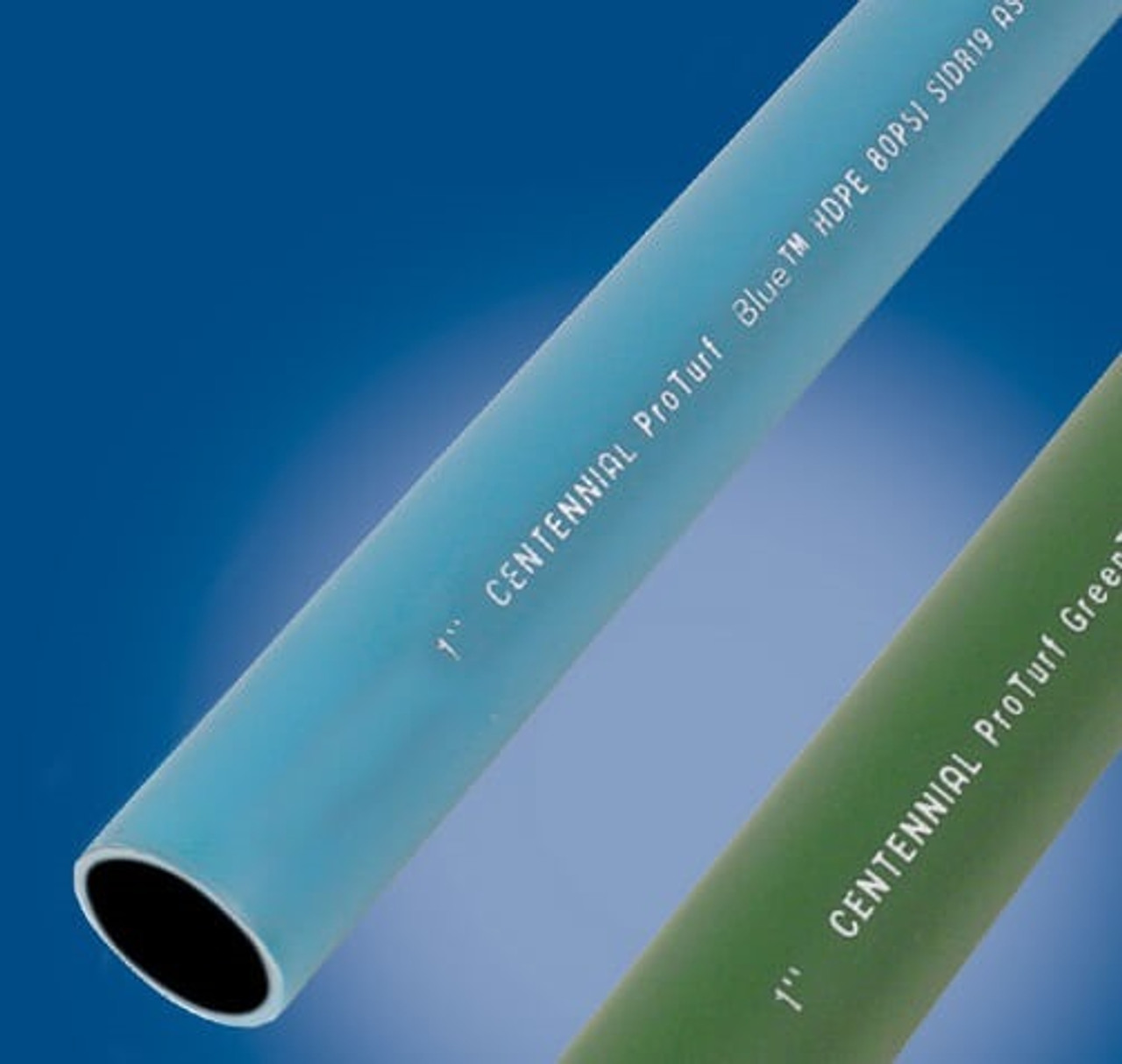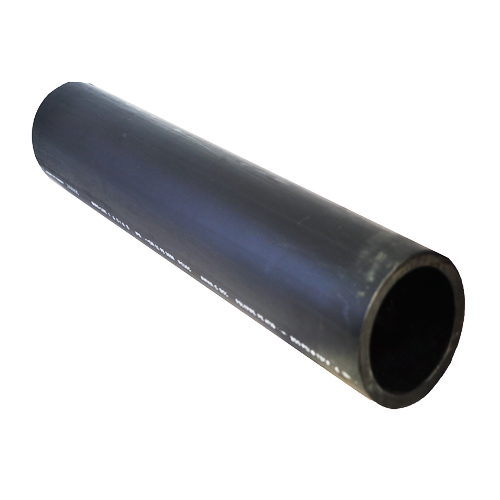Check Out the Production Refine Behind High-Quality HDPE Pipeline and Its Applications
The manufacturing process of premium HDPE pipes is intricate and systematic. It starts with the selection of basic materials that boost performance. Following this, ethylene goes through polymerization to form material, which is then formed with extrusion. Quality control is critical, guaranteeing that the end product meets rigorous requirements. The journey of HDPE pipelines doesn't end with production. Their applications throughout different sectors reveal a more comprehensive significance worth checking out.
Comprehending HDPE: Features and Advantages

High-density polyethylene (HDPE) is a flexible thermoplastic understood for its durability and resistance to different ecological elements. This product exhibits outstanding tensile toughness, making it suitable for demanding applications. Its low-density framework adds to a lightweight product, assisting in ease of dealing with and installment. HDPE also showcases amazing resistance to chemicals, which lessens destruction when exposed to severe compounds.
The product's reduced moisture absorption even more improves its durability, making it excellent for use in pipelines and tank. Furthermore, HDPE is immune to ultraviolet (UV) radiation, making certain that items keep their integrity even when exposed to sunlight. Its versatility enables for the development of complex forms without endangering strength. The environment-friendly nature of HDPE, often stemmed from recycled materials, includes in its charm, advertising sustainable methods in production. Generally, these properties and benefits make HDPE a recommended selection for different industrial and customer applications.
Basic Material Selection for HDPE Manufacturing
The option of basic materials for HDPE production is necessary to verify the final product fulfills the wanted specs and high quality standards. High-density polyethylene (HDPE) is primarily generated from polymerized ethylene, obtained from nonrenewable fuel sources such as gas or unrefined oil. The high quality of these feedstocks considerably influences the mechanical and thermal residential or commercial properties of the final HDPE.
Ingredients likewise play a significant duty in improving HDPE's performance, including antioxidants, UV stabilizers, and colorants, which boost durability and resistance to ecological elements. The option process must take into consideration not only the chemical make-up of the raw materials but likewise their processing attributes to guarantee reliable production.
The sourcing of raw materials must focus on sustainability and compliance with ecological regulations, as accountable techniques are vital in today's market. Inevitably, cautious raw product selection lays the foundation for generating top quality HDPE pipelines suitable for diverse applications.
The Extrusion Process: Forming HDPE Pipe
The extrusion process plays a vital function in shaping HDPE pipes, beginning with precise product prep work techniques that ensure excellent flow and consistency. Just as vital is the design of the die, which directly influences the last measurements and surface quality of the pipeline. With each other, these variables add considerably to the performance and quality of HDPE pipe production.
Material Preparation Methods
Effective manufacturing of HDPE pipelines starts with meticulous material preparation methods, particularly the extrusion process. During this stage, high-density polyethylene material is very first dried out to remove dampness, guaranteeing suitable circulation qualities. The resin is after that fed right into the extruder, where it undertakes home heating and melting, transforming right into a thick state. This home heating procedure is meticulously regulated to keep the material's stability and efficiency. The molten HDPE is required through a die, shaping it right into a continual pipeline kind. Appropriate temperature management during extrusion is vital, as it directly influences the product's residential properties and the end product high quality. Once formed, the HDPE pipeline is cooled down and reduced to defined lengths, prepared for subsequent processing and applications.
Die Style Significance
Precision in die layout plays a necessary duty in the extrusion procedure of HDPE pipes. The die works as the final shaping device, directly affecting the pipe's dimensions, wall surface density, and surface area finish. A properly designed die assurances consistent material circulation, reducing defects such as irregularities and read more weak areas. The geometry of the die need to be maximized to accommodate the particular residential properties of HDPE, including its thickness and thermal habits during extrusion. Furthermore, the cooling price of the material as it travels through the die can considerably influence the pipeline's structural honesty. As a result, purchasing sophisticated die technology is crucial for producers aiming to generate high-quality HDPE pipelines that meet industry criteria and consumer expectations.
Quality Control Steps in HDPE Production
Although various factors influence the top quality of HDPE pipeline manufacturing, effective quality control steps are important to ensure uniformity and integrity in the end product. Secret quality control techniques include strenuous material assessment, confirming that the raw polyethylene meets established criteria for pureness and thickness. During the extrusion process, parameters such as temperature, pressure, and cooling time are carefully kept track of to maintain dimensional precision and architectural honesty
On top of that, post-production testing is essential; makers often perform hydrostatic tests to assess the pipeline's toughness and resistance to stress. Aesthetic assessments for surface area defects better enhance quality guarantee. Certification from appropriate criteria companies, like ASTM or ISO, provides an extra layer of trustworthiness. By implementing these detailed quality assurance measures, suppliers can lessen problems, improve efficiency, and make certain that the HDPE pipes fulfill the particular demands of different applications, ultimately bring about client contentment and rely on the product.
Applications of HDPE Pipe Throughout Industries
HDPE pipelines are utilized throughout various markets due to their sturdiness and versatility. In water distribution systems, they assure effective shipment, while in wastewater administration, they provide dependable solutions for waste transport. In addition, agricultural watering networks gain from HDPE's resistance to rust and flexibility, making it a perfect option for modern-day farming techniques.

Water Circulation Equipments
A significant variety of sectors depend on high-density polyethylene (HDPE) pipelines for effective water distribution systems. Understood for their resilience and resistance to corrosion, HDPE pipes are commonly utilized in metropolitan water networks, farming irrigation, and industrial applications. Their lightweight nature assists in easy handling and setup, minimizing labor costs and time. Additionally, HDPE pipes can accommodate different stress degrees, making them appropriate for both reduced and high-pressure systems. American Plastics HDPE Pipe for Oilfield. The flexibility of the product permits smooth assimilation into existing facilities, decreasing the demand for extensive excavation. Moreover, HDPE's resistance to chemical leaching warranties that the water provided continues to be risk-free and tidy, making it a perfect selection for maintaining the top quality of potable water across numerous industries
Wastewater Administration Solutions
Effective water distribution systems also lead the method for cutting-edge wastewater management remedies, where high-density polyethylene (HDPE) pipelines play a substantial role. Distinguished for their resilience and resistance to corrosion, HDPE pipes are optimal for transferring wastewater in various settings. Their adaptability enables easy setup in complicated atmospheres, lessening the need for substantial excavation. In addition, HDPE's smooth interior surface area lowers rubbing, improving circulation rates and efficiency. These pipelines are also immune to chemical leaching, making certain that pollutants do not jeopardize the surrounding environment. Industries, districts, and treatment facilities increasingly rely upon HDPE pipes for their reliability and longevity, making them a favored option for modern-day wastewater management systems. This flexibility underscores the important value of HDPE pipelines across various applications.
Agricultural Irrigation Networks
Agricultural irrigation networks profit greatly from the usage of high-density polyethylene (HDPE) pipelines, which provide efficient and trusted water distribution to crops. HDPE pipes are light-weight, making them easy to carry and set up, while their adaptability enables various configurations in varied terrains. These pipelines demonstrate superb resistance to deterioration, chemicals, and UV radiation, making sure resilience in extreme agricultural atmospheres. Furthermore, their smooth interior surface decreases friction loss, maximizing water circulation and minimizing power costs connected with pumping. The longevity of HDPE pipelines, frequently exceeding 50 years, adds to lower maintenance and substitute expenditures. Farmers increasingly depend on HDPE pipelines to improve irrigation performance and advertise sustainable farming methods, eventually leading to improved plant yields and resource conservation.

Future Patterns in HDPE Pipeline Technology
As the need for sustainable and reliable framework grows, developments in HDPE pipe innovation are poised to transform different sectors. Arising patterns consist of the combination of smart innovations, such as sensors and IoT abilities, which assist in real-time tracking of pipeline problems, lowering maintenance costs and protecting against leakages. In addition, the advancement of sophisticated production techniques, such as 3D printing, is enabling the production of facility, personalized pipeline designs that deal with particular task requirements.
Furthermore, the concentrate on recycling and round economic climate methods is driving the innovation of HDPE pipelines made from recycled products, boosting sustainability. Boosted jointing methods, such as electro-fusion and mechanical fittings, are also boosting setup effectiveness and dependability. Lastly, the expanding emphasis on ecological policies is pressing suppliers to adopt greener production procedures, guaranteeing that HDPE pipes not just meet industry requirements yet likewise promote an even more lasting future for facilities development.
Often Asked Questions
Just How Does HDPE Compare to Other Plastic Products?
HDPE surpasses lots of various other plastic products concerning sturdiness, chemical resistance, and flexibility. Its reduced thickness and high tensile toughness make it suitable for numerous applications, often surpassing choices in both performance and longevity.
What Are the Ecological Effects of HDPE Production?
The ecological impacts of HDPE manufacturing include greenhouse gas emissions, energy intake, and prospective air pollution from manufacturing processes. Additionally, improper disposal can bring about soil and water contamination, elevating issues about lasting ecological impacts.
Can HDPE Piping Be Reused?
Yes, HDPE pipes can be reused. Several centers accept made use of HDPE for processing, changing it into new items. This reusing adds to sustainability initiatives, lowering plastic waste while conserving resources and energy in the production cycle.
What Is the Life Expectancy of HDPE Pipeline?

Just How Do Temperature Level Variations Impact HDPE Pipe Efficiency?
Temperature level variations greatly influence HDPE pipe efficiency, influencing versatility and toughness. High temperatures can result in softening, while reduced temperature levels may trigger brittleness, inevitably affecting the pipe's durability and suitability for various applications in diverse atmospheres.